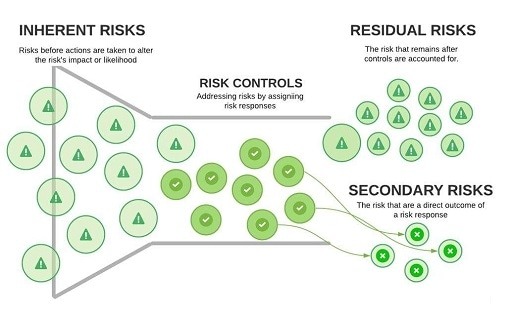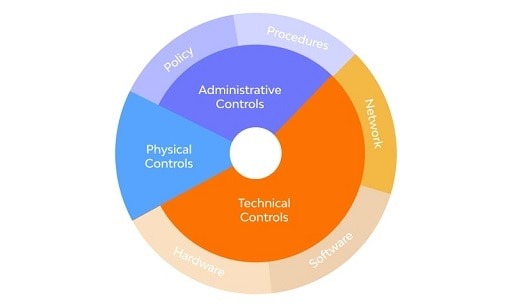It is important that every SEO professional develops at least some foundational understanding of website development. Why? Because withweb development knowledge and skills, one opens the door to greater success with their website and brand.
In this tutorial, I will first explain what web development is and the different types of web development. Then, I will outline the details of HTML, which will be followed by an explanation of how web development and SEO work in cooperation.

What is Website Development?
Web development includes the plans and maintenance of a website through the use of technologies like HTML, PHP, JavaScript, and content management systems. Web development should be differentiated from web design in that development is an aspect dealing with the technical treatment which a website undergoes; it differs from the aesthetics or the looks of a website.
It is good to know how web code works. With the evolution of modern CMS platforms such as WordPress and Wix, the art of web development can also be performed by persons who have no background in coding. But partial knowledge in web technologies is important because it means the developer will be able to troubleshoot problems and develop customized solutions.
Web development is important because it directly influences revenue by developing a high-performance online experience.
Web Development Vs. Web Design
Web design primarily concerns itself with the visual appearance and user interaction of a website. On the other hand, web development involves the technical aspects of website creation.
Although there may be some overlap between the two fields, with some web designers possessing development skills and vice versa, they are distinct disciplines.
Categories Of Web Development
There are multiple kinds of web development. But they all fall into two categories:
- Front-End Development.
- Back-End Development.
Web Development Vs. Web Design
Web design primarily concerns the aesthetic appeal and the way users interact with a website. On the other hand, web development deals more with technical activities associated with the development of a website.
While the roles of a web designer and a web developer might and will often overlap – where a web designer may well have development skills, too, or vice versa – they are nonetheless distinct professions.
Categories Of Web Development
There are many types of web development; however, each falls into one of two categories, including:
- Front-End Development.
- Back-End Development.
Frontend Web Development
This would cover the creation and implementation of what visually and interactively a user comes into contact with on a website. In general, a front-end developer works with such technologies as HTML, CSS, and JavaScript in designing and developing a user interface and user experience.
Front-end web development involves the creation and design of components and features that website visitors interact with through web browsers directly. More technically, a web browser is also the client that refers basically to the device executing the code of a website.
Due to this fact, front-end development is sometimes known as client-side development. The front-end web development requires a sound knowledge of HTML, CSS, and JavaScript. These three are the foundational technologies on which the development of an interactive web is built.
Back-End Web Development
This involves work that is done behind the scenes. A back-end developer designs and maintains the server side, databases, and application logic that support functionality on a website. They generally use programming languages such as PHP, Python, Ruby, and several different frameworks like Node.js or Django.
Back-end web development refers to the coding and functionality behind the website; this takes place on the server side, inclusive of scripting languages and web frameworks. In other words, another important name given to the back-end is server-side development because this deals with the operations on the server behind the scenes.
For instance, PHP is a back-end language that enables a web server to pull specific elements of a webpage from a database. Back-end development typically involves different kinds of programming languages and scripts, including PHP, JavaScript, and Python. These languages give the foundation for the execution of the server-side activity and data processing.
Coding Language of Websites: HTML
HTML is the backbone of websites. It is the language that tells computers how a webpage should look. HTML is a coding language built around rather simple rules.
If you have ever played board games such as Monopoly, chess, or Checkers, then you understand most games are played using rules and pieces of the game.
That is largely the same with HTML: The game pieces are the HTML elements and their attributes, and there are rules for how to use them. These rules allow users to create webpages that web browsers can render and display in a beautifully presented manner for website visitors.
What does the abbreviation HTML stand for?
HTML stands for HyperText Markup Language. HTML is one of the most important parts of web development and relates to anyone who works with websites. Knowledge in the basics of HTML is an essential acquirement for web developers and everybody who works in any aspect of website management.
HyperText
In other words, HyperText means the links connecting different webpages. During the 1990s, the word HyperText began to catch on because it described how a network of interconnected information could be established around the globe.
HyperText links were used to connect many webpages in a website and to connect websites together. So, in this manner, a web-like network of interconnected information was created.
This metaphor of the spider web has been invented by Tim Berners-Lee, the author of the Internet. It justifies the naming convention of the webpages, websites, and search engine spiders.
Markup Language
Markup language provides a structured means of conveying formatting information and defining the various components that collectively compose a webpage.
In essence, HyperText Markup Language (HTML) is a link-driven system that facilitates the creation of webpages and websites interconnected with other webpages and websites.
HTML Webpage Components
HTML is composed of elements, which serve as the fundamental building blocks.
Elements can be enhanced and customized using attributes.
Certain elements represent significant sections of a webpage.
Visualize these major sections as analogous to the playing board, where all the website’s content and interactions take place.
The Major Sections Of A Webpage
<HTML>
Tells the browser that this is an HTML page.
This element encompasses the entire webpage.
<HEAD>
This specific section is designated for metadata.
Metadata refers to information that is not directly visible on the webpage but serves browsers and search engines.
An example of metadata is the meta description element, which offers a concise summary of the webpage utilized by search engines in their search results.
Moreover, this section includes links to essential resources required for constructing the visible components of the website, among other functionalities.
<BODY>
The <BODY> section represents the visible content of a webpage, and it always follows the <HEAD> section.
Major elements within the <BODY> section are identified by both opening and closing “tags,” indicating where an element starts and ends.
A beginning tag looks like this:
<example>
An ending tag looks like this:
</example>
Here is a macro-level outline of a webpage:
<HTML>
<HEAD>
</HEAD>
<BODY>
</BODY>
</HTML>
In this <BODY> element, several elements are used that determine the actual content on the page, such as paragraphs, images, links, and so on. In general, attributes are used to modify elements, usually with more information.
For instance, the attribute “alt” is an attribute for an image element <IMG>. It allows for alternative text to be given. The point of this alternative text is to explain what is contained on the image for visitors who use assistive technologies, such as screen readers.
A paragraph element may also carry the “class” attribute. The “class” attribute applies a particular formatting to the text of the paragraph, such as custom font size.
Difference Between An Element And A Tag
The words “element” and “tag” are sometimes used synonymously; however, they are different in concept.
A real code snippet of an HTML element is actually called a tag because it typically contains both a start tag and an end tag. The TITLE element, which gives info about the content of the webpage, might appear like so:
<TITLE> Words that describe what a webpage is about.</TITLE>
Here, the HTML coding for the title is considered the TITLE element.
However, the individual code snippets themselves, namely <TITLE> and </TITLE>, are referred to as tags, more precisely the start tag and end tag.
Tags identify the name of the element and indicate where the element starts and ends – for elements that have a start and end tag.
Many people refer to elements as tags, but more accurately it can be said that HTML elements are technically known as elements, not tags.
It is therefore only the code snippet itself that is called a tag.
More on Tags and Elements
An older reference to HTML tags by W3C.org devotes itself to tags as being opening and closing tags and has an emphasis on the syntax of the code written in HTML. It does not refer to elements as being tags.
According to the definition given on Mozilla developer pages, an HTML tag is used to generate an element.
It is relevant to say that elements and tags are not the same. Tags denote where an element begins and ends in the source code, while elements are part of the Document Object Model, DOM, which shows the structure of the webpage in the browser.
Although the improper usage of the word “tag” when referring to HTML elements may be small, it is good practice in web development to use proper and accurate jargon to ensure clarity of understanding while referencing any aspect of web development.
CSS
CSS stands for Cascading Style Sheets. It is the second major element in web development. CSS is used in controlling the style and appearance of a web page.
CSS files include font, border size, color, styling information, etc.
In older versions of HTML, style info was integrated into the HTML document. In HTML 4, style sheets were introduced. This provided complete separation between style data and content related data.
This is an innovative use of CSS styling an entire website from one file; therefore, consistency across the whole site is maintained, and maintenance would be much easier.
Difference Types Of Web Development
Though it is very well possible to create webpages from scratch in HTML, it becomes very inconvenient for the publisher of a site who wants to publish sites on a regular basis.
To counter this, the most commonly followed method for website development is using a content management system (CMS).
Content management systems are also available as open-source and closed-source, thus the developers can go with one type or the other based on their requirements and interests.
Examples of Open Source CMS:
- Drupal.
- Joomla.
- WordPress.
Examples of Closed Source CMS include:
- Duda.
- Shopify.
- Squarespace.
- Wix.
WordPress And Web Development
WordPress has become the leading method of creating e-commerce sites, news sites, informational sites, and local business sites.
With WordPress, you can choose a template that will work for what you want your website to look like and start publishing. Of course, you can edit a template to perfectly fit your needs, but you will need to do some light template editing.
This is not to say knowledge of HTML, CSS, or PHP coding is required in order to edit a WordPress template. While WordPress was designed to be a very user-friendly platform, web development knowledge will be useful in the creation of custom templates- better known as “child templates”- and for the implementation of features not supported by the selected template.
These third-party site builders make the work of creating websites with WordPress easier by providing drag-and-drop interfaces and tools.
Closed-source content management systems, in general, prioritize ease of use, thereby reducing the need for extensive web development skills when working with those systems.
How Web Development and SEO Work Together
In the world of SEO, web development has become more and more important. Page speed factors directly and indirectly into the rankings of webpages in search engines. To optimize page speed, there is often a need to understand the more technical aspects of web development and how webpages appear in browsers.
Chrome Developer Tools, not Chrome SEO Tools, is what Chrome offers for debugging website performance.
While some SEO professionals try to improve website performance using WordPress plugins, the honest truth is that web development skills are better suited for diagnosing and fixing problems in website performance.
Web development allows scaling of critical SEO components like structured data implementation, automated meta descriptions, and code optimization that provides optimal crawling of the website by search engines.
While performing web development, much significance is given to Search Engine Optimization right from the frontend to the backend.
Web development is one of the biggest solutions to online success.
Learning web development expertise is often about more than just knowing how to fix problems; it helps in knowing where the problem areas are and what may be some of the solutions.
Mostly, learning the ropes of web development yourself will allow you to further your online success, as you are better poised to understand problems and quickly jump over hurdles that present themselves.










